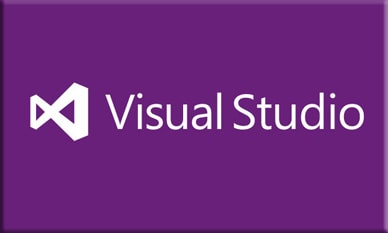
Module 1: A Lap Around the Visual Studio 2017 Family
- What’s new in Visual Studio 2017
- Overview of the Visual Studio 2017 family
- Overview of product features
- A lap around Visual Studio Team Services
Module 2: A Lap Around Microsoft Azure
- Overview of Microsoft Azure
- Advantages of Platform as a Service (PaaS)
- Azure App Service
- Azure Virtual Machines
Module 3: Configuring Our Project in VSTS
- Creating and configuring a new team project
- Configuring teams in VSTS
- Cloning a Git repository into your team project
Module 4: Agile Planning
- Overview of Agile planning tools
- Managing work using teams
- Tracking progress using Kanban and task boards
- Portfolio management
Module 5: Configuring a Modern Build Environment
- Understanding build infrastructure
- Using hosted build infrastructure
- Configuring a hybrid environment with on-premises agents
- Hosting private build infrastructure in Azure
Module 6: Automating Builds
- Creating a build definition
- Customizing your build using tasks
- A closer look at build attributes
- Triggering builds
Module 7: Maintaining Code Quality
- The importance of maintaining code quality
- Unit testing
- Code coverage
- Code Clone Analysis
Module 8: Creating Automated Release Pipelines
- Overview of release management
- Understanding artifacts
- Creating a release definition
- Understanding environments
- Approval workflows and notifications
Module 9: A Closer Look at Build and Release Definitions
- Configuring Continuous Deployment (CD)
- Multi-machine deployment using deployment groups
- Managing secrets in the Azure Key Vault
Module 10: Automating Functional and Performance Tests
- Configuring infrastructure for test execution
- Executing UI tests (Coded UI and Selenium tests)
- Executing load and performance tests using Azure
Module 11: Using Azure Resource Manager
- Overview of Azure Resource Manager (ARM)
- Creating an ARM template
- Using ARM in your release pipelines
Module 12: Monitoring Applications Using Application Insights
- Overview of Application Insights (AI)
- Adding AI to our applications
- Alerts and availability
- Diagnose failures and exceptions
Module 13: Creating Dashboards to Show Build and Release Status
- Creating a Build and Release dashboard
- Displaying build information on the dashboard
- Displaying release information on the dashboard
DevOps-focused team members working with VSTS and Azure to build, release, and monitor applications.
Attendees should be familiar with Visual Studio and have used Visual Studio Team Services.
At the completion of this course, attendees will be able to:
- Describe the full feature set of Microsoft’s Application Lifecycle Management suite
- Understand some of the key products within Microsoft Azure
- Create and configure your team project
- Create teams within your project to better manage work
- Clone a Git repository
- Use the Agile planning tools to maintain a prioritized flow of work to the team
- Plan and configure different types of scalable build environments
- Author build definitions for a variety of application types including ASP.NET and .NET Core
- Configure Continuous Integration (CI) builds
- Create custom build workflows using build steps
- Use popular third-party extensions to improve your build workflow
- Identify the problems caused by technical debt
- Use some common features in Visual Studio to help reduce technical debt
- Automate the execution of tests as part of our build
- Understand the features and capabilities of Release Management
- Create and manage release definitions
- Create environments to handle your release requirements
- Manage configuration information in each environment
- Deploy software to Microsoft Azure
- Configure Continuous Deployment (CD) by triggering releases from builds
- Create approval workflows and track releases across environments
- Understand Azure Resource Manager (ARM) and create ARM templates
- Configure Application Insights to provide rich information about the availability, usage and performance of your application
- Create information-rich dashboards to show build and release status
 Print Page
Print Page